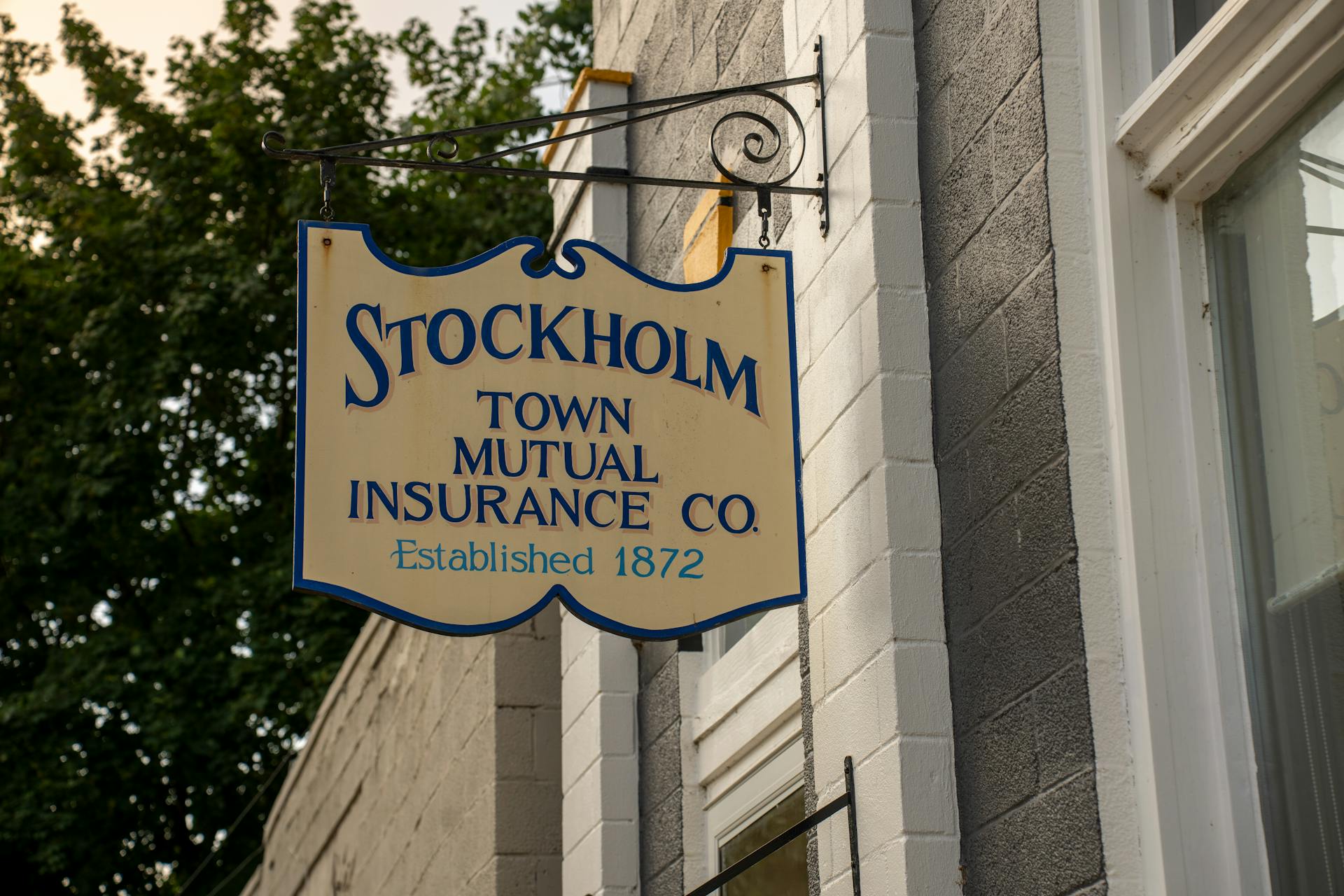
Kiva Organization has been a game-changer for many individuals and communities around the world. By providing access to microloans, Kiva has helped people start or expand their own businesses, creating a ripple effect of economic growth.
Their approach is unique in that they partner with local microfinance institutions, known as Field Partners, to reach borrowers in over 77 countries. This allows Kiva to have a significant impact on a global scale while also supporting local economies.
One of the key factors that sets Kiva apart is its focus on transparency and accountability. Borrowers, lenders, and Field Partners can all track the loan process and repayment history online, providing a level of transparency that is rare in the microfinance industry.
Kiva's impact is not limited to just economic growth; it also has a positive effect on communities. By providing access to capital, Kiva helps people create jobs, improve their living standards, and increase their overall well-being.
About Kiva
Kiva was founded in October 2005 by Matt Flannery and Jessica Jackley.
Their initial interest in microfinance was inspired by a 2003 lecture given by Grameen Bank's Muhammad Yunus at Stanford Business School.
Kiva's first seven loans were funded in April 2005, totaling $3,500, and the original entrepreneurs were dubbed the "Dream Team".
Kiva channels capital to the most underserved segments of the global economy and builds the infrastructure needed for broader financial inclusion.
Kiva's crowdfunding platform, Kiva.org, allows individuals to lend as little as $25 to make a difference in someone's life.
Kiva has reached 2 million users, with 1.26 million of whom have made one or more loans.
Kiva's mission is to expand financial access to help underserved communities thrive.
Kiva enables individuals to make loans as small as $25 to emerging businesses, helping would-be entrepreneurs realize their ambitions.
Kiva aims to create a global community of partners to alleviate poverty, one business at a time.
Lending Process
Kiva works with over 300 microfinance institutions, social impact businesses, schools, and non-profit organizations around the world, called "Field Partners", that post profiles of qualified local entrepreneurs on the Kiva website.
Lenders can browse borrower profiles on kiva.org and choose an entrepreneur they wish to fund, loaning money in increments of $25. They can transfer their funds to Kiva through credit card processing or PayPal, which waives its transaction fee.
Kiva aggregates loan capital from individual lenders and transfers it to the appropriate Field Partners, which disburse the loan to the borrower.
Path to Scale
Kiva's technology platforms have mobilized capital for underserved individuals and enterprises, accelerating financial inclusion. This has been achieved through Kiva.org, which reduces the cost of borrowing, and Kiva Protocol, which creates pathways to formal financial inclusion.
Kiva.org has been a game-changer, enabling individuals to make loans as small as $25 to support emerging businesses. This was made possible by Matt Flannery, who co-founded Kiva.org in 2005 after witnessing firsthand how a small loan could change the life of an entrepreneur in East Africa.
As of 2019, Kiva's crowdfunding platform, Kiva.org, has been used by 1.8 million individual lenders to make over $1.3 billion in loans to 3.2 million individual borrowers. Over 80 percent of these borrowers are female.
Kiva has continued to innovate and expand its reach. In 2019, the organization launched two new platforms: Kiva Capital and Kiva Protocol. Kiva Capital is a delivery channel for large impact investors to mobilize funds to small entrepreneurs in low-income countries through microfinance institutions.
Kiva Protocol is a digital ID and credit history platform designed to drive faster financial inclusion. This platform is being piloted with the government of Sierra Leone and anticipates going live in 2020 for all 5.3 million adults and all financial institutions in the country.
Here are some key statistics about Kiva's lending process:
- Kiva.org has made over $1.3 billion in loans to 3.2 million individual borrowers.
- Over 80 percent of Kiva borrowers are female.
- Kiva Protocol aims to bring 250 million people into the formal financial system.
Lending Process
Kiva works with over 300 microfinance institutions, social impact businesses, schools, and non-profit organizations around the world, called "Field Partners", that post profiles of qualified local entrepreneurs on the Kiva website.
Lenders can browse borrower profiles on kiva.org and choose an entrepreneur they wish to fund. They can loan money in increments of $25.
Kiva aggregates loan capital from individual lenders and transfers it to the appropriate Field Partners, which disburse the loan to the borrower. Kiva does not charge interest on the capital sent to Field Partners, but often Field Partners do charge some level of interest to borrowers to cover administration costs.
Interest is typically higher on loans from microfinance institutions in developing countries than interest rates on larger loans in developed countries because of the administrative costs of overseeing many tiny loans, and the increased risk.
Lenders can withdraw their principal or re-lend it to another entrepreneur as the loan is repaid.
Finances
Kiva has distributed a staggering $827,356,850 in loans to 1,928,760 borrowers as of March 15, 2016.
The average loan size is $411.26, and the average Kiva user has made 10.17 loans. This shows that Kiva's platform is not only efficient but also encourages repeat lending behavior.
Kiva's current repayment rate for all its partners is 97.1%, indicating a high level of trust and reliability in the organization's lending model.
Kiva's main sources of funding include grants, financial backing, and discounted services from major national corporations and institutions. This diverse funding model helps ensure the organization's financial stability and flexibility.
Here are some notable grants received by Kiva:
Kiva's financials are transparent, and the organization's net assets in 2012 totaled $16,248,638. This financial stability allows Kiva to continue its mission of providing affordable financial services to underserved communities.
Repayment Frequency Uncertainty
Defaults on loans can be low, but this might be due to field partners paying Kiva for loans defaulted to them to maintain good credit.
Whether interest rates collected by field partners are enough to cover defaults depends on local economic conditions.
Field partners may pay Kiva for defaulted loans to keep their credit rating high, which raises questions about the accuracy of default rates.
Local economic conditions play a significant role in determining whether field partners can absorb defaults through interest rates.
Finances
Kiva has distributed an impressive $827,356,850 in loans to 1,928,760 borrowers as of March 15, 2016.
The average loan size is $411.26, which is a relatively small amount, but it can make a big difference for individuals in need.
Kiva's current repayment rate for all its partners is 97.1%, which is a staggering number and a testament to the organization's effectiveness.
This high repayment rate is likely due to the fact that the average Kiva user has made 10.17 loans, which suggests a strong commitment to the organization's mission.
Kiva's financials are also impressive, with a total revenue of $15,632,786 for the fiscal year 2012 and a net assets of $16,248,638.
The organization's main sources of funding are grants, financial backing, and discounted services from major national corporations and institutions, such as Chevron Corporation, Visa Inc., and Skoll Foundation.
Kiva does not charge interest on its loans, instead supplying capital to microfinancing institutions for free, which then lend out money with a portfolio yield of over 30%.
Here is a breakdown of the grants awarded to Kiva:
Interest Rates
Interest rates for micro-loans can be quite high, with some field partners charging as much as 60.5% interest or more.
The average interest rate for loans on Kiva is not publicly disclosed, but the organization does publish the average "Portfolio Yield" of each field partner, which measures the income earned from outstanding loan portfolios.
Kiva defends the high interest rates of its field partners, citing the higher costs of making micro-loans in developing countries compared to larger loans in the West.
In 2009, micro-loans from Kiva partners in Guatemala averaged 23.16% for the equivalent of US$430 lent on average, comparable to the commercial BanRural rate of 24.5% for a loan of US$635.
Here's a breakdown of the number of loans on Kiva sorted by interest rate as of November 2018:
Some observers have pointed out that the "Portfolio Yield" measure is unreliable and does not directly reflect the actual price that borrowers are paying for the loans.
Frequently Asked Questions
Is Kiva a legitimate organization?
Yes, Kiva is a legitimate nonprofit organization, registered as a 501(c)(3) in the United States, with a strong track record of transparency and accountability. Learn more about Kiva's mission and impact on our website.
What is the kiva.org controversy?
Kiva's loan funding model differs from its implied method, leading to controversy among some users. This discrepancy has raised questions about the true nature of lending on the platform.
What is the purpose of a Kiva?
Kiva is an international nonprofit that provides financial inclusion through crowdfunded loans. Its purpose is to empower people worldwide by putting the power of financial access in their hands.
Featured Images: pexels.com


